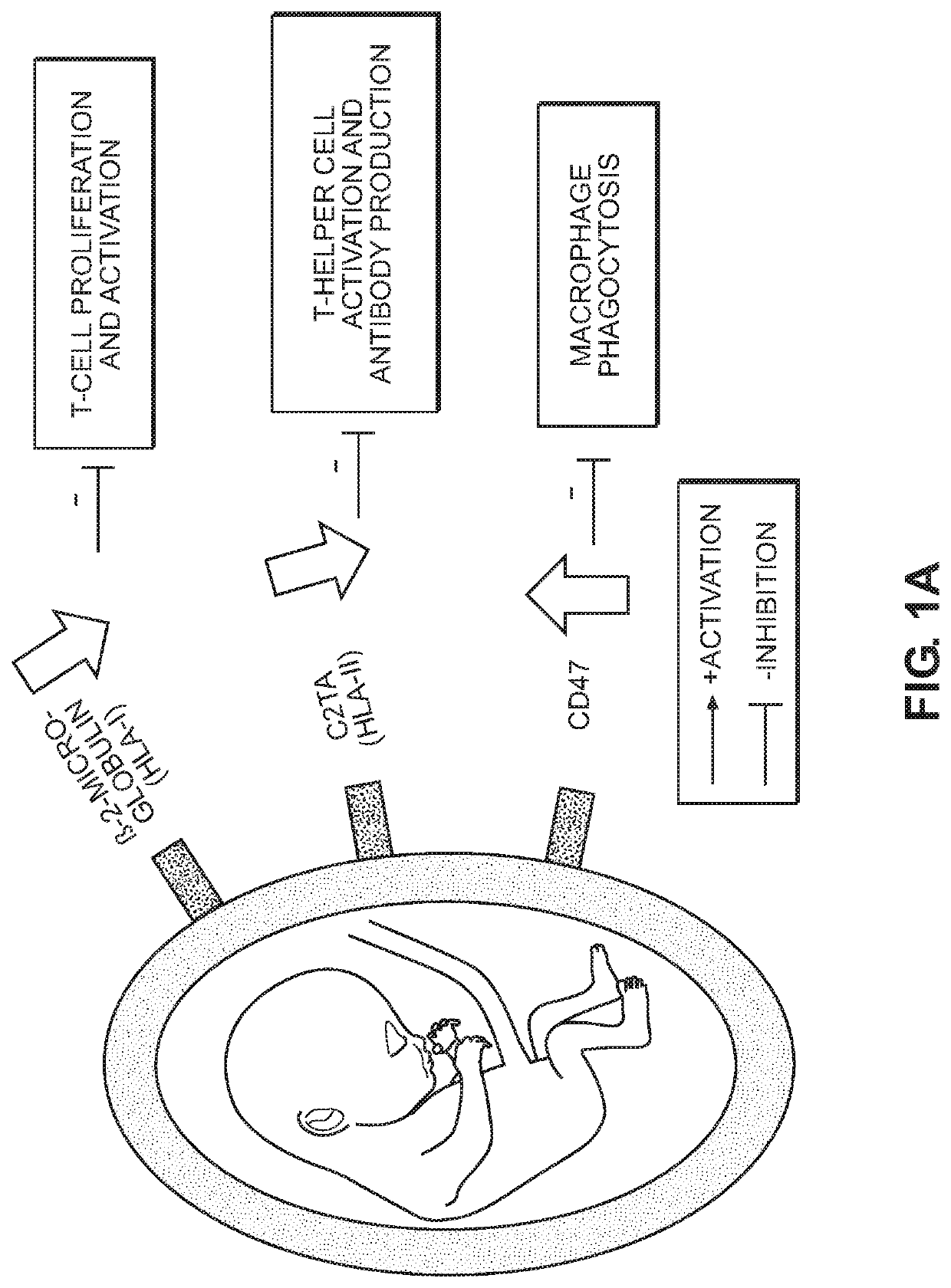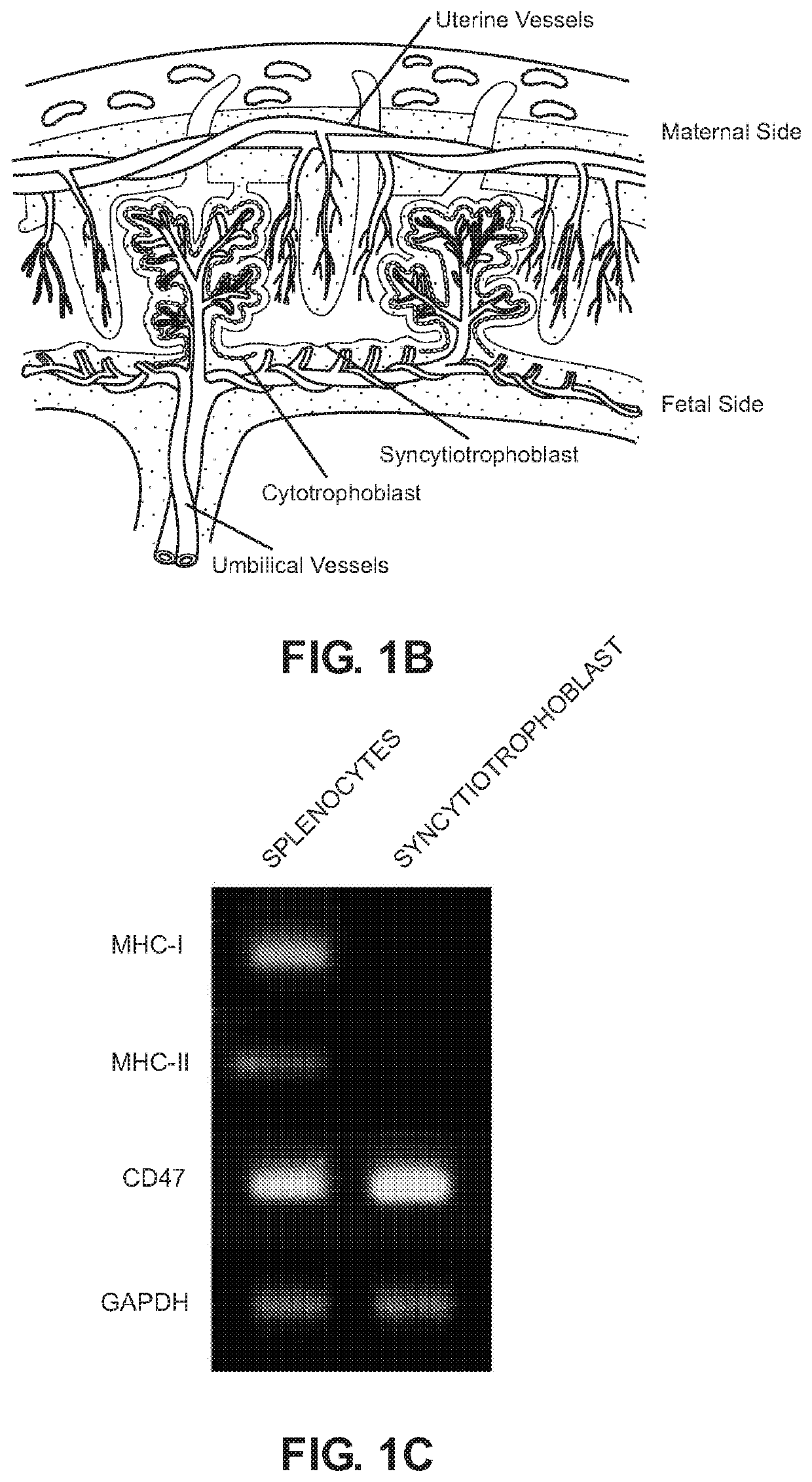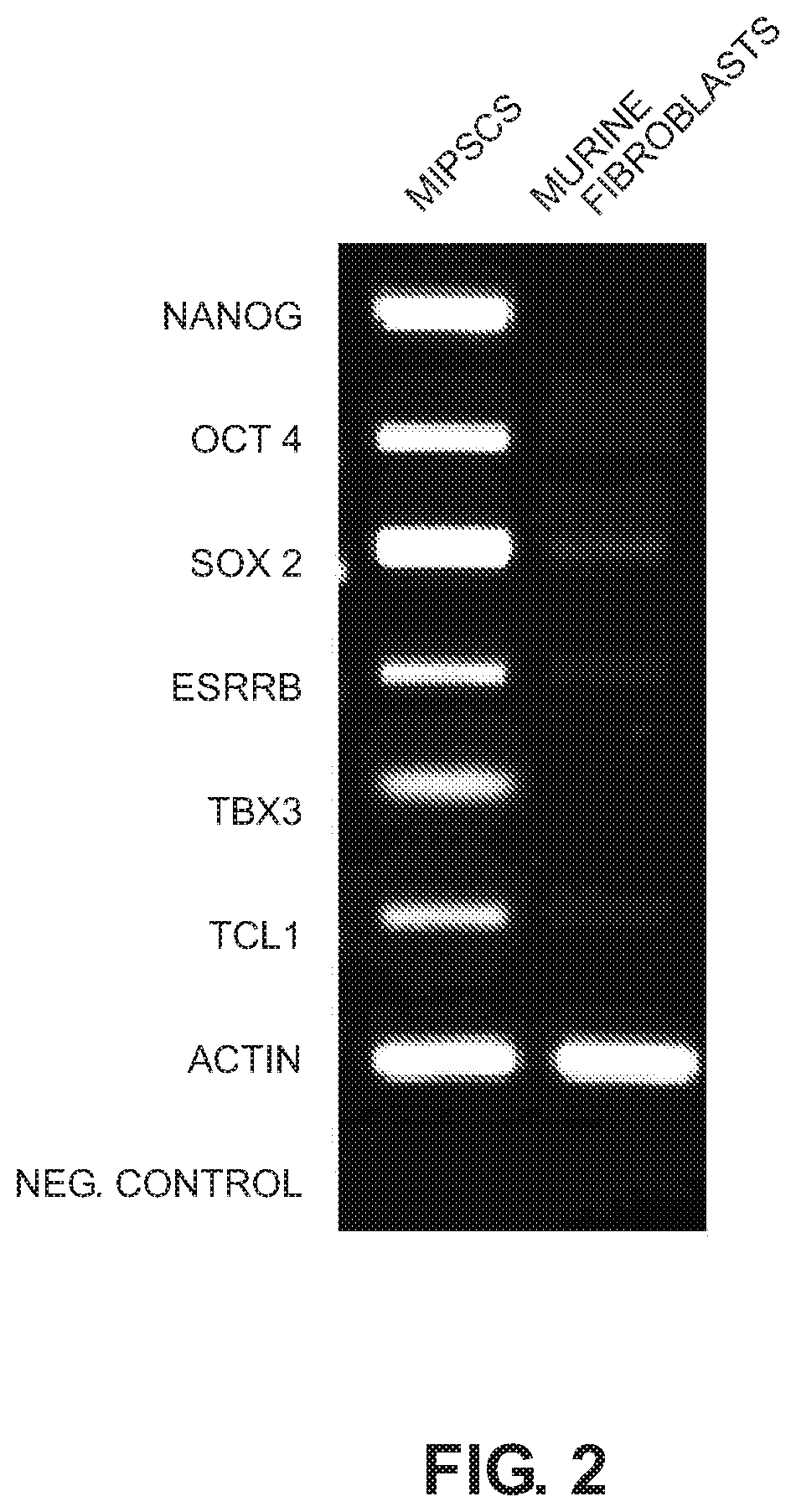Immunoengineered pluripotent cells
a technology of pluripotent cells and stem cells, applied in the field of immunoengineered pluripotent cells, can solve the problems of reducing the potential efficacy of therapeutics, reducing the positive effects surrounding such treatments, and posing technical and manufacturing challenges, so as to reduce the susceptibility of pluripotent cells, reduce endogenous, and increase the expression of proteins
- Summary
- Abstract
- Description
- Claims
- Application Information
AI Technical Summary
Benefits of technology
Problems solved by technology
Method used
Image
Examples
example 7
I. Differentiation of Human HIP Cells
[0314]1. Differentiation of hHIP Cells to Human Cardiomyocytes
[0315]This was done using a protocol adapted from Sharma et al., J. Vis Exp. 2015 doi: 10.3791 / 52628, hereby incorporated by reference in its entirety and specifically for the techniques to differentiate the cells. hiPSCs were plated on diluted Matrigel (356231, Corning) in 6-well plates and maintained in Essential 8 Flex media (Thermo Fisher). After the cells arrived at 90% confluency, the differentiation was started and media was changed to 5 mL of RPMI1640 containing 2% B-27 minus Insulin (both Gibco) and 6 uM CHIR-99021 (Selleck Chem). After 2 days, media was changed to RPMI1640 containing 2% B-27 minus Insulin without CHIR. On day 3, 5 uL IWR1 was added to the media for two further days. At day 5, the media was changed back to RPMI 1640 containing 2% B-27 minus insulin medium and incubated for 48 hr. At day 7, media was changed to RPMI 1640 containing B27 plus insulin (Gibco) and...
PUM
| Property | Measurement | Unit |
|---|---|---|
| temperature | aaaaa | aaaaa |
| thickness | aaaaa | aaaaa |
| Concentration | aaaaa | aaaaa |
Abstract
Description
Claims
Application Information
 Login to View More
Login to View More - R&D Engineer
- R&D Manager
- IP Professional
- Industry Leading Data Capabilities
- Powerful AI technology
- Patent DNA Extraction
Browse by: Latest US Patents, China's latest patents, Technical Efficacy Thesaurus, Application Domain, Technology Topic, Popular Technical Reports.
© 2024 PatSnap. All rights reserved.Legal|Privacy policy|Modern Slavery Act Transparency Statement|Sitemap|About US| Contact US: help@patsnap.com










